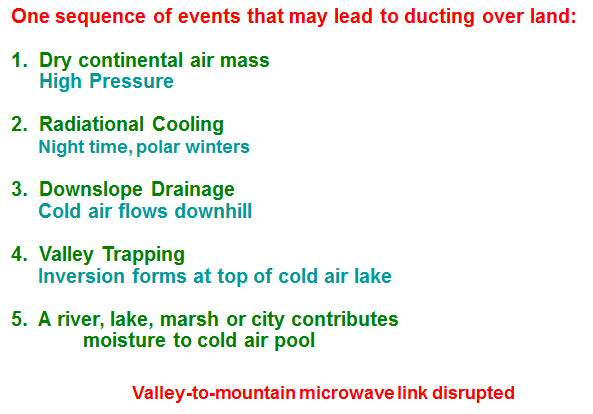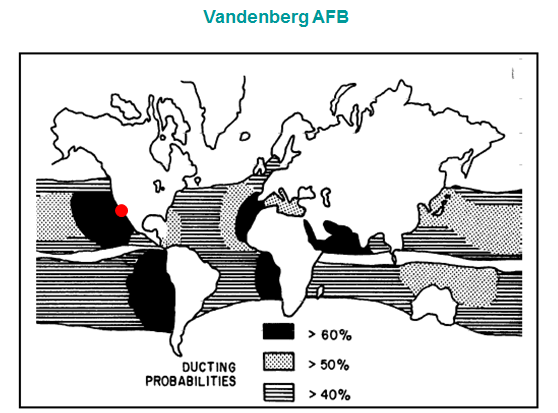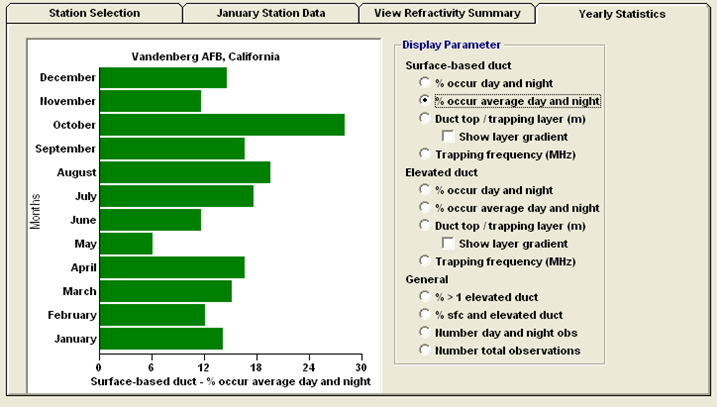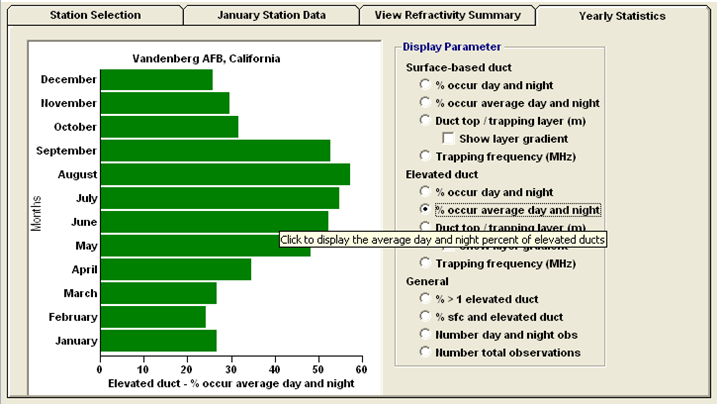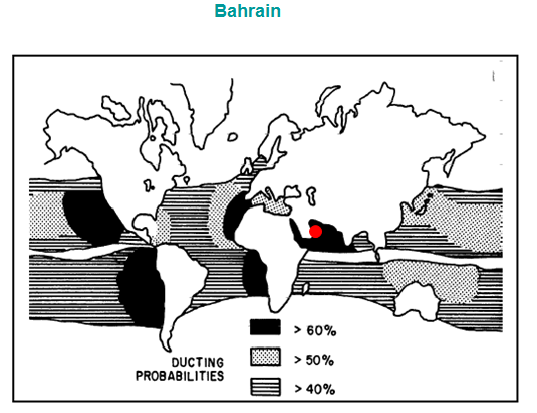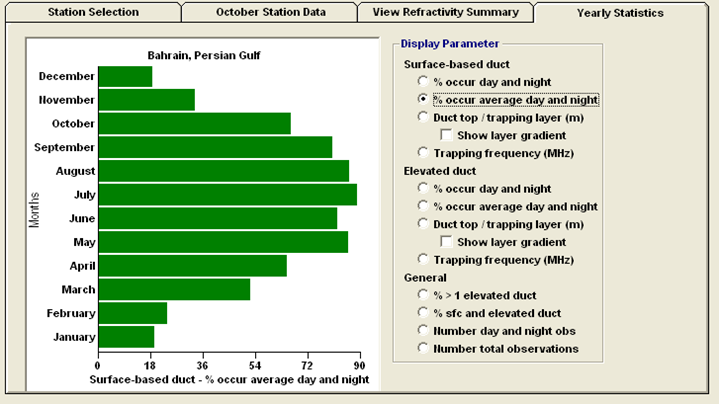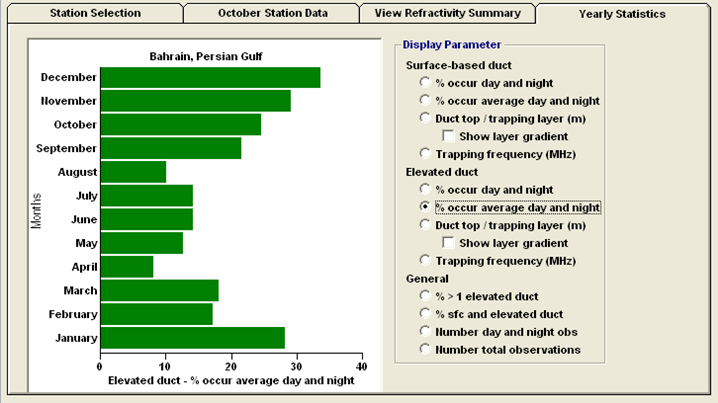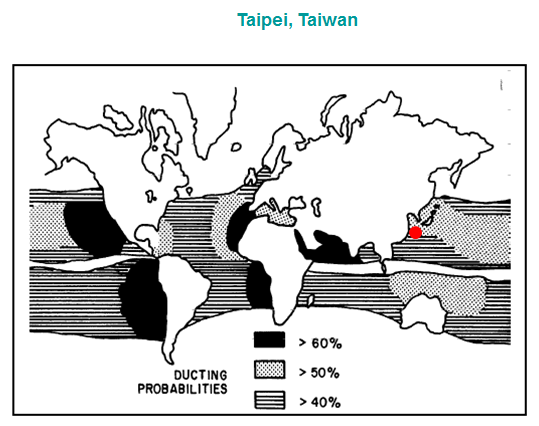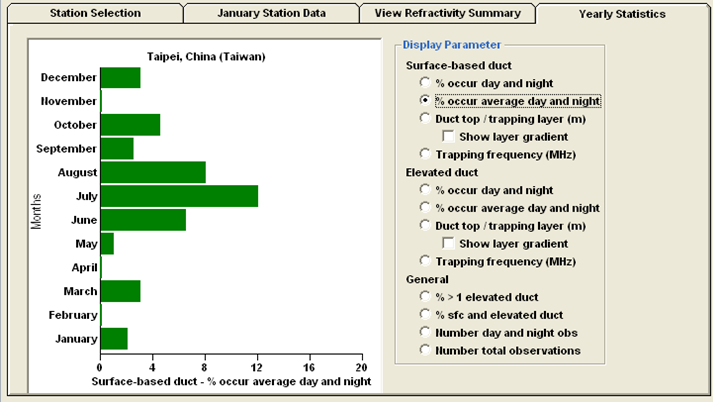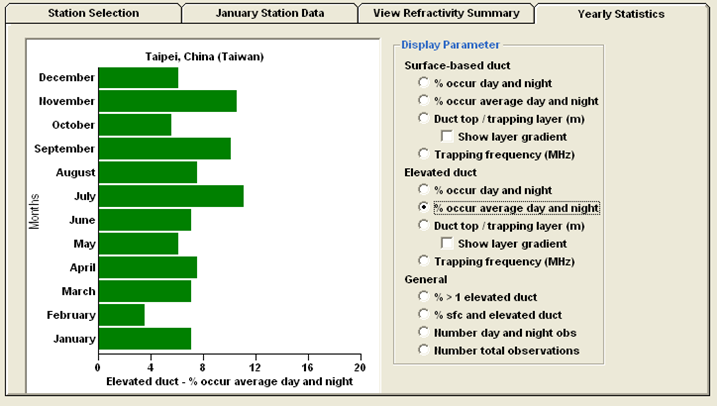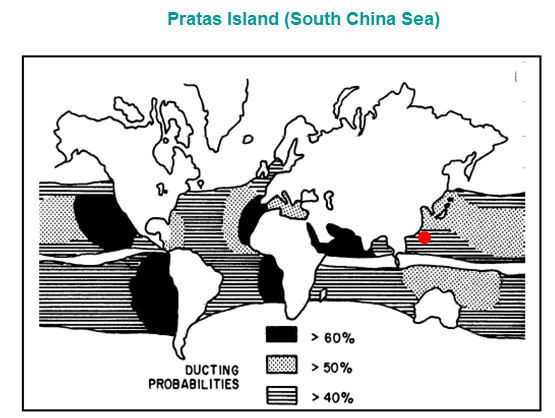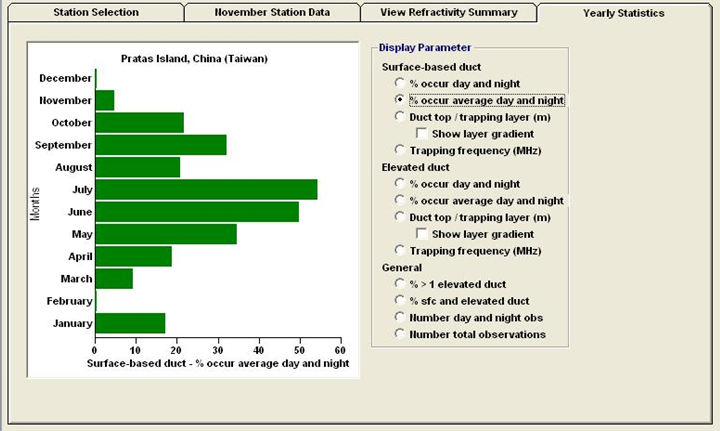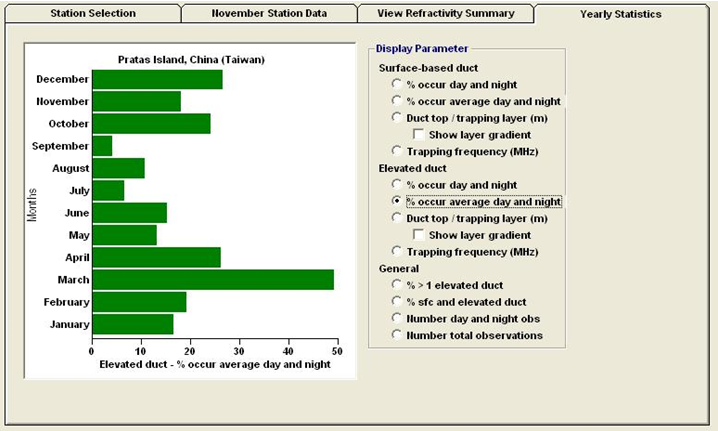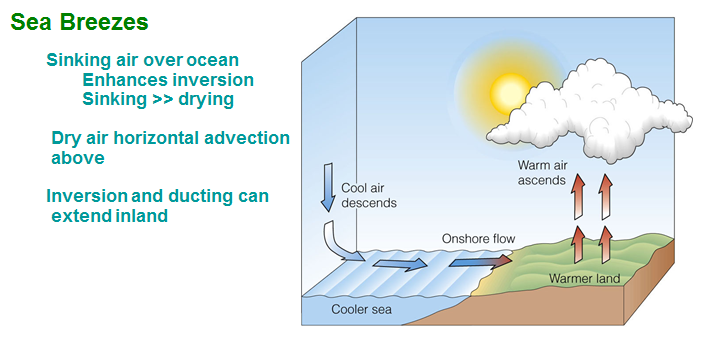
Sea breezes occur in coastal areas when the land heats up. Since hot air is lighter it will rise and be replaced with low level air from the ocean. As the heated air rises it can return at higher levels back to the ocean where it sinks, resulting in a complete circulation cell. The sinking area is favorable to inversions and may create or enhance ducting.
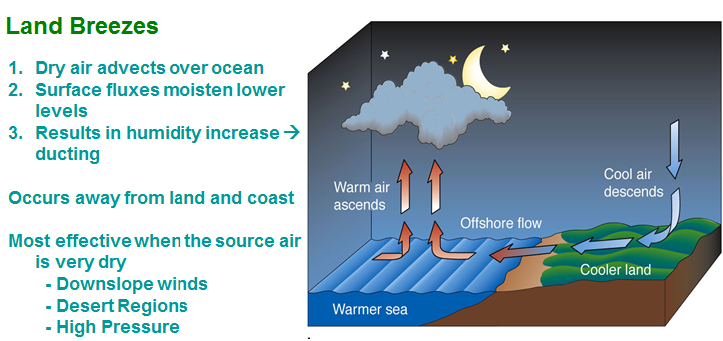
Land breezes occur at night when the ocean is warmer than the nearby land areas. The cycle is opposite the sea breeze, with low level air moving from land to ocean while the upper level return flow goes from ocean to land. In this situation ducting can occur over the ocean where masses of dry land air are moistened on the bottom, which can cause surface ducting.
